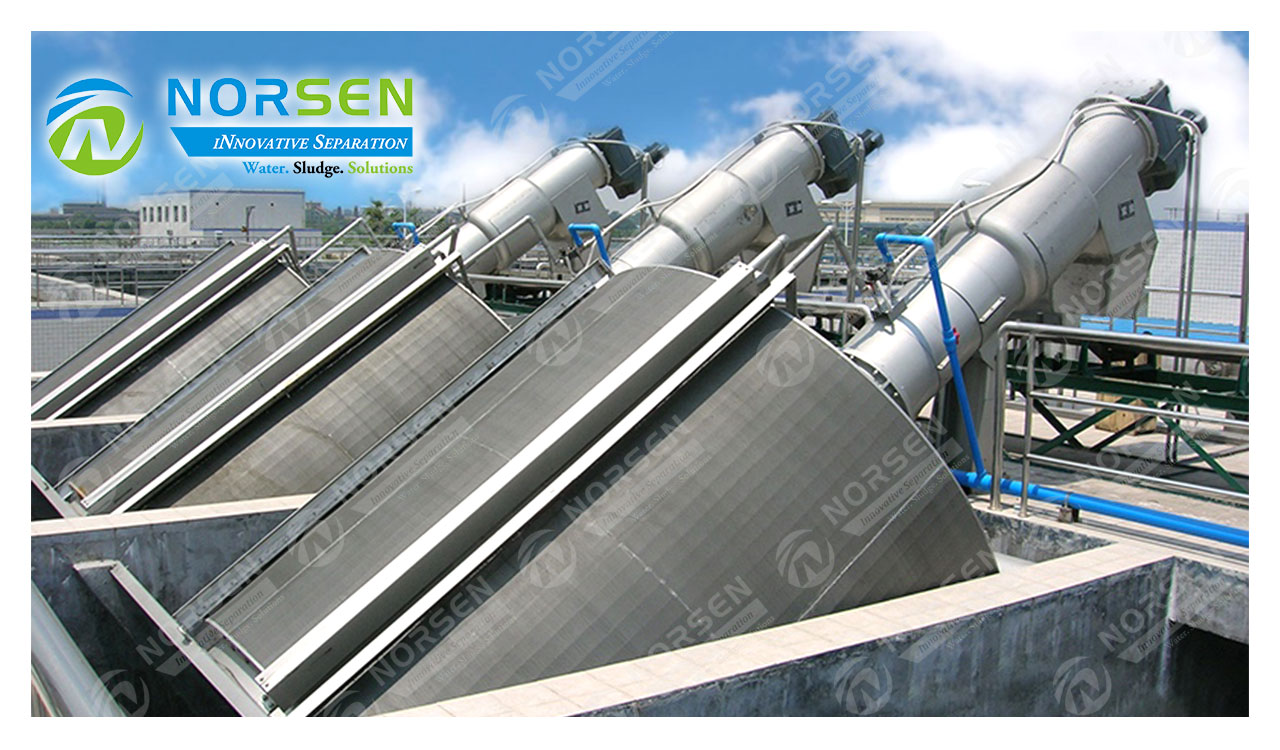- Multi-Disc Screw Press
- Dissolved Air Flotation
- Pretreatment Screens
- Lamella Clarifier
- Sludge Treatment
- Aeration
- MBBR
Office Add:Union Building 11 floor, 8th industrial street, Wuxi, Jiangsu, China
Factory Add:Xibei H-Tech Park Wuxi Jiangsu China
Tel: 0086 138 1256 5699
E-mail: jenny@norsenep.com;sales@norsenep.com
Screening process in the wastewater treatment process
Poster:Norsen │ Time:2021-08-28
Every step in wastewater treatment involves screening to remove debris that may damage pumps and other treatment equipment, so screening is a critical first step.
When wastewater reaches the wastewater treatment plant from the sewer, it goes through two main stages. There are several steps in each stage. It starts from screening and then enters the sedimentation tank through the grit tank. This is only the first stage of wastewater treatment. The second stage involves more filtration, disinfection and possible dechlorination. There are also processes specific to factories such as hydroelectric power plants and steel mills or paper mills. Each requires treatment of water before it can be returned to nearby rivers, lakes and oceans. Each involves screening to remove debris that can damage the pump and other processing equipment. The screening procedure in the wastewater treatment process is the critical first step. Certain items in wastewater treatment can cause blockages and damage water treatment equipment. Items such as tampons applicators, diaper pads, sanitary napkins, baby wipes and condoms should not be washed. People will do it anyway. In hydroelectric power plants, storms or strong winds can blow leaves, branches, and entire trees into waterways. This is why screening process in the wastewater treatment process is an important first step in any of these industries.

How does the screening process work? In the first stage of wastewater treatment, when water enters wastewater treatment plants or other facilities, it passes through various stainless steel screens. The size of the screen used in wastewater treatment determines the content of the screen. You can use the widescreen to capture items such as branches, branches and water bottles, soda cans and plastic bags. Water can flow through, but debris cannot. As the screen size decreases, it will capture smaller particles and objects. A finer screen product can capture sludge, grease lumps and other solids. The sieve is paired with the rake to remove material from the sieve to prevent clogging. The wastewater enters the screening process in the wastewater treatment process, and the material is captured by the screen. When the water level is high enough, the garbage rake moves on the screen used in wastewater treatment to remove debris. This keeps the water flowing through the screen. After the rake passes, the debris is moved to the collection box. The garbage rake makes a second pass, where the rake is cleaned and ready for the next pass. The debris is removed from the collection box on the conveyor belt, where it is cleaned and moved to the debris container. From the debris container, the debris can enter the incinerator, landfill or compost area.
What happens after screening? One thing that the screen cannot capture is the fine sand and gravel that enters the wastewater during the first stage of wastewater treatment. The sand, silt and other small materials from the road maintenance in winter pass through the screen used in wastewater treatment and sink to the bottom of the grit tank, where they can be removed. At this point in the screening process in the wastewater treatment process, there may still be tiny particles. They are processed in a sedimentation tank, where they combine to form a solid, which is then removed by a pump. The sludge in the sedimentation tank can be processed into fertilizer particles. By the beginning of the next stage of treatment, about 85% of the organic matter in the wastewater has been removed. In order to remove the rest, it can be filtered through a layer of stone or material that consumes organic matter by bacteria. Another option is to transfer the water to a tank, where the wastewater is aerated and mixed with bacteria, which break down the rest of the material. The remaining liquid is aerated again and pumped into a new water tank, where it will be mixed with chlorine to kill any remaining bacteria. The treated water may eventually return to the basin, where it is recycled as water and piped to households and businesses in nearby towns. Before returning it to the home, it will be tested to ensure it is safe to eat.
How to buy screens used in wastewater treatment? Norsen specializes in selling screening products. The rotating filter screen is located in a horizontal cylinder. It can capture solid and organic materials in a cylindrical basket. We also have options for garbage rakes and other water treatment parts and equipment. These are some options that can help you remove waste. Talk to our experts to learn more and provide the best screening products for your business or factory needs. Contact us and let us know how we can help.
Tags: screening process in the wastewater treatment process, first stage of wastewater treatment, screen used in wastewater treatment
- How to choose Low Temperature Sludge Dryer2021-08-12
- How to optimize biological wastewater treatment systems2021-08-18
- Modern innovative wastewater treatment solutions2021-08-21
- Screening process in the wastewater treatment process2021-08-28
- Sewage treatment effect by dissolved air flotation2021-09-08
- Solid-liquid separation equipment2021-09-12
- The uses of sludge dewatering polymer2021-09-16





















